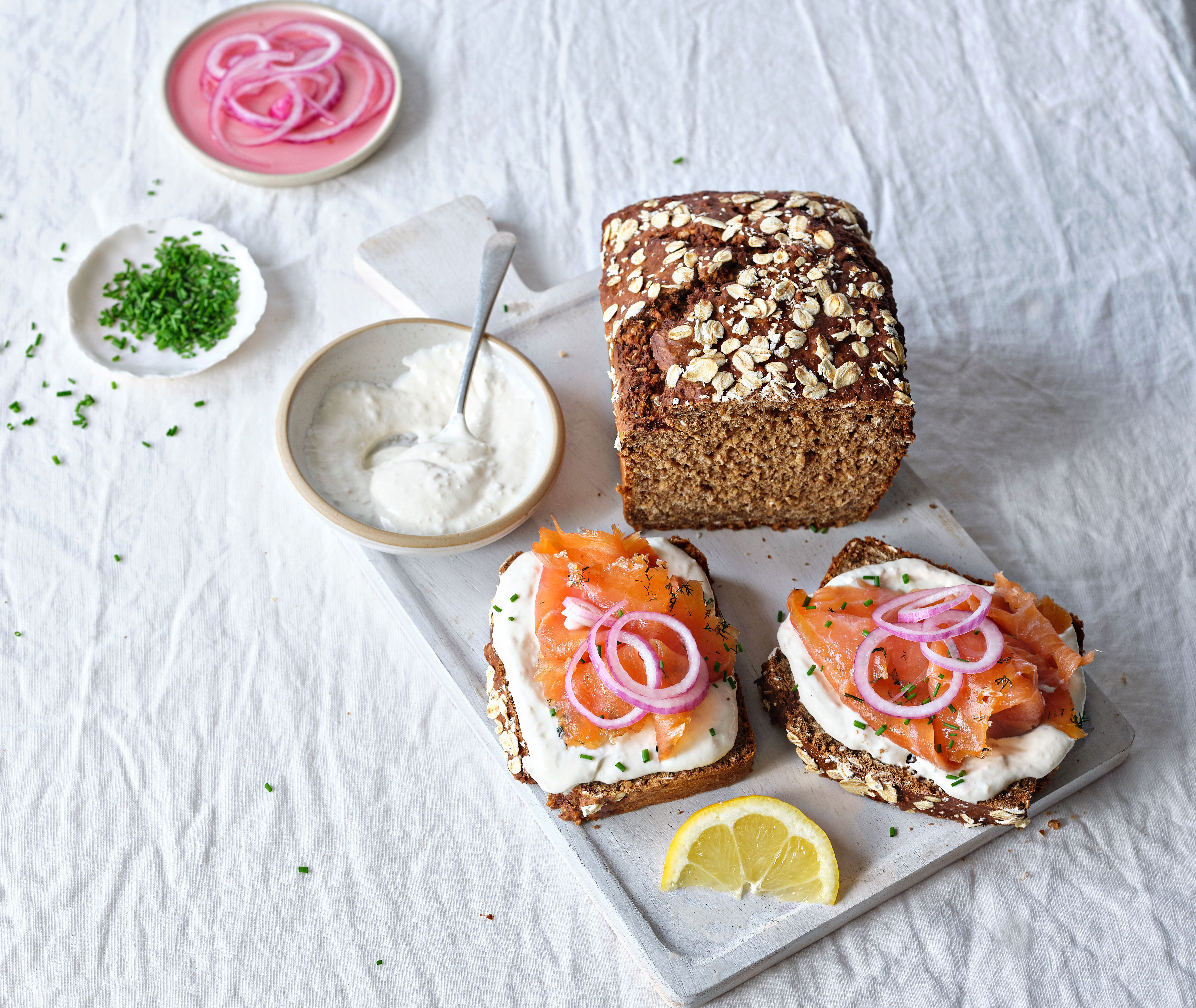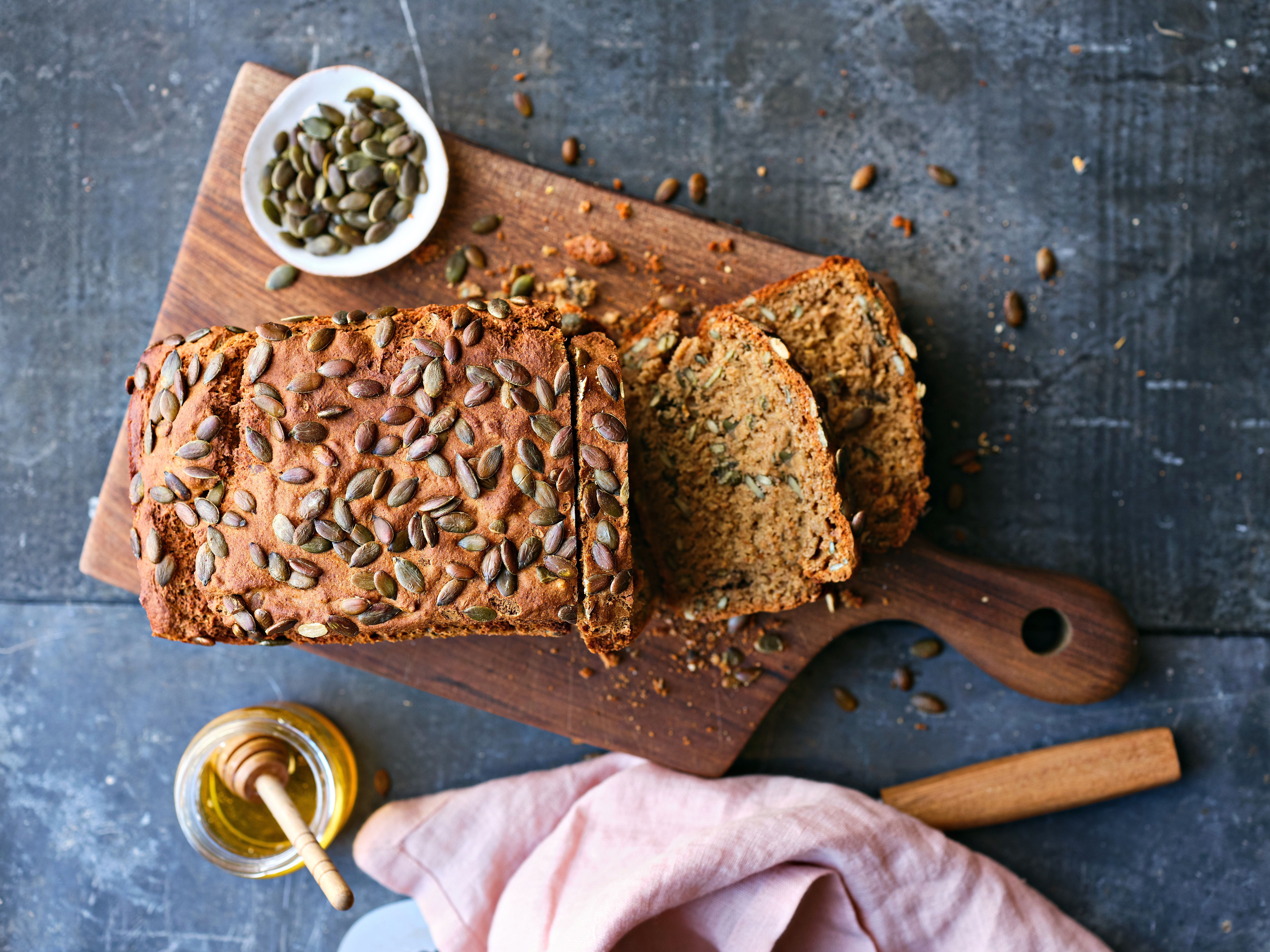Cookery Feature - Bake
%20(Pic%20Joanne%20Murphy)%20copy.jpg) Although we have many traditional bakes in Ireland for calendar festivals and other special occasions, there’s never any need for an excuse to do a bit of baking and it’s one of the things we do best. Not that we’ve always remembered that – we went through a long period when sliced pan was king and when I wrote my own baking book ‘The Best of Irish Breads & Baking’, in the mid ‘90s, it was in the hope of inspiring a revival in home baking. Fortunately things have changed a lot since then and this wonderfully caring and beautifully produced book is a celebration of the magic of Irish baking in its traditional and more creative modern forms. Also – like all of the books produced over the last couple of years by publishing sensation Kristin Jensen of Nine Bean Rows and Blasta Books – it tells a story.
Although we have many traditional bakes in Ireland for calendar festivals and other special occasions, there’s never any need for an excuse to do a bit of baking and it’s one of the things we do best. Not that we’ve always remembered that – we went through a long period when sliced pan was king and when I wrote my own baking book ‘The Best of Irish Breads & Baking’, in the mid ‘90s, it was in the hope of inspiring a revival in home baking. Fortunately things have changed a lot since then and this wonderfully caring and beautifully produced book is a celebration of the magic of Irish baking in its traditional and more creative modern forms. Also – like all of the books produced over the last couple of years by publishing sensation Kristin Jensen of Nine Bean Rows and Blasta Books – it tells a story.
%20copy.jpg) Graham Herterich, aka The Cupcake Bloke, grew up above the family’s renowned pork butchers shop in Athy County Kildare and, aside from an outstanding recipe collection, the story that is woven so warmly through the book – and illustrated with family photos down through the years – also tells us a lot about rural Ireland, especially since the 1970s. Also how a love of food, and baking in particular, was passed down by Graham’s mother, grandmothers, aunts and neighbours - who, among other significant women (for they are nearly all women), people this lovely book and led him to become the professional baker he is today, and author of a book in which ‘every recipe for a traditional bake is followed by a fresh new spin using the ingredients available in Ireland now, from advieh to zhug’.
Graham Herterich, aka The Cupcake Bloke, grew up above the family’s renowned pork butchers shop in Athy County Kildare and, aside from an outstanding recipe collection, the story that is woven so warmly through the book – and illustrated with family photos down through the years – also tells us a lot about rural Ireland, especially since the 1970s. Also how a love of food, and baking in particular, was passed down by Graham’s mother, grandmothers, aunts and neighbours - who, among other significant women (for they are nearly all women), people this lovely book and led him to become the professional baker he is today, and author of a book in which ‘every recipe for a traditional bake is followed by a fresh new spin using the ingredients available in Ireland now, from advieh to zhug’.
And a huge amount of research and TLC has gone into Bake, which covers not only the much-loved breads, scones and bracks that say ‘Ireland’ (and the butter and other dairy products that partner them so perfectly) – but also a wide range of seriously delicious cakes, desserts and other treats. And there are no gimmicks. While it’s a great read, this is a real hands-on baker’s book, complete with introductory chapters on the history of Irish baking and the modern landscape of Irish food, by food writers Ali Dunworth and Dee Laffan (editor of companion publication ‘Scoop’) that give context, and ‘Everything you need to know’ chapters on baking and ingredients, that answer all of the questions for novice bakes or anyone unfamiliar with Irish ways.
For many people, Bake will change their perception of Irish baking, and of Irish food in general - and also, perhaps, of Athy and other rural Irish towns. Highly recommended.
Bake: Traditional Irish Baking with Modern Twists by Graham Herterich is published by Nine Bean Rows. Hardback 978-1-9993799-4-0; 224 pages175mm x 223mm €25.00 / £21.50 / US$27.00
SAMPLE RECIPES
 Guinness brown bread
Guinness brown bread
Guinness brown bread has become iconic over the years. My favourite way to eat it is sliced and topped with some horseradish crème fraîche, smoked salmon and pickled red onion, all accompanied by a glass of the black stuff!
Makes 1 x 900g (2lb) loaf
melted butter, for greasing the tin
300g coarse wholemeal flour
150g plain flour, plus extra for dusting the tin
50g porridge oats, plus extra to sprinkle on top
1 tsp bread soda
1 tsp salt
250ml buttermilk
200ml Guinness stout
100g treacle
2 tbsp vegetable oil
To serve:
smoked salmon
horseradish crème fraîche (see the note)
pickled red onion (see the note)
chopped fresh chives
Preheat the oven to 180°C fan. Prepare a 900g (2lb) loaf tin by lightly brushing it with melted butter and dusting with a little plain flour.
Place all the dry ingredients in a large bowl and gently mix.
In a separate jug, gently whisk all the wet ingredients together with a fork, then mix this into the dry ingredients. Add a little more buttermilk if the mixture is too dry – it should be a soft, wet dough.
Pour the dough into the prepared tin and sprinkle some extra porridge oats on top. Bake in the preheated oven for 55 minutes. Carefully take the bread out of the tin and place it back in the oven on the rack for a further 5 minutes. To check if the bread is baked, tap the bottom – it should sound hollow when fully cooked.
Remove from the oven and wrap in a clean tea towel while it’s cooling to stop the crust getting too hard. Serve with smoked salmon, horseradish crème fraîche and pickled red onion and garnish with chopped fresh chives.
NOTE
To make the horseradish crème fraîche, simply stir a teaspoon of horseradish sauce into a small tub of crème fraîche. For the pickled red onion, halve and thinly slice a red onion. Pour over 4 tablespoons white wine vinegar, 1 teaspoon salt and 1 teaspoon caster sugar. Leave to stand for 1 hour before using.
Bake: Traditional Irish Baking with Modern Twists by Graham Herterich is published by Nine Bean Rows (€25)
 Rye, ale & honey bread
Rye, ale & honey bread
I wanted to create a bread that worked really well with baked ham and cold meats. My dad was a pork butcher, so it’s only natural that he is the inspiration for this recipe. He loves a pint of Smithwick’s and with a surname like Herterich, I had to look to Germany for some inspiration. I’ve used rye flour and lots of seeds, like so many good German breads. I love this bread served with the honey and mustard baked ham along with some good salted butter, gherkins and mustard. Pass the Kölsch – prost!
Makes 1 x 900g (2lb) loaf
melted butter, for greasing the tin
300g dark rye flour
150g plain flour, plus extra for dusting the tin
100g pumpkin seeds, plus extra to sprinkle on top
1 tsp bread soda
1 tsp salt
250ml buttermilk
250ml ale
75g honey
2 tbsp vegetable oil
Preheat the oven to 180°C fan. Prepare a 900g (2lb) loaf tin by lightly brushing it with melted butter and dusting with a little plain flour.
Place all the dry ingredients in a large bowl and gently mix.
In a separate jug, whisk all the wet ingredients together with a fork, then mix this into the dry ingredients. Pour the dough into the prepared tin and sprinkle some porridge oats on top. Bake in the preheated oven for 1 hour, then take the bread out of the tin and place it back in the oven, straight on the oven rack, for a further 5 minutes. To check it’s baked, tap the bottom of the bread – it should sound hollow when it’s fully cooked.
Remove from the oven and wrap in a clean tea towel while it’s cooling to stop the crust getting too hard.
Bake: Traditional Irish Baking with Modern Twists by Graham Herterich is published by Nine Bean Rows (€25)





There are currently no comments
Leave a comment
Not a member? Register for your free membership now!
Or leave a comment by logging in with: